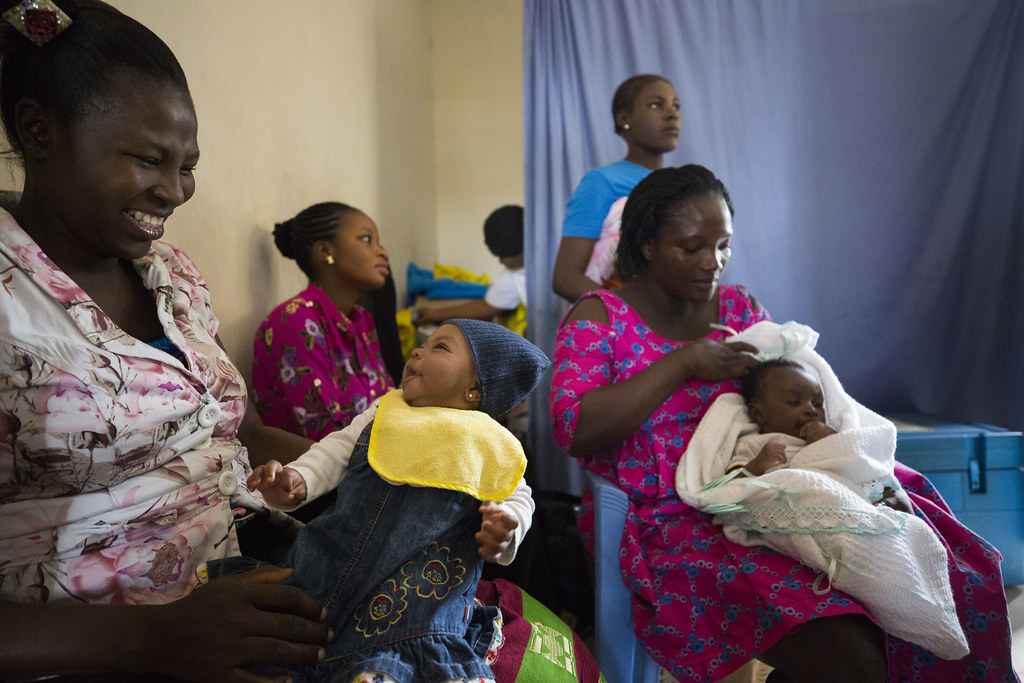文:宋瑞文(媽媽監督核電廠聯盟盟特約撰述)
本站聲明:網站內容來源環境資訊中心https://e-info.org.tw/,如有侵權,請聯繫我們,我們將及時處理
【其他文章推薦】
※避免吃悶虧無故遭抬價!台中搬家公司免費估價,有契約讓您安心有保障!
※家事清潔服務公司專業打掃,還給你煥然一新的居家環境!
※桃園搬家公司推薦優質、合法立案,讓你安心絕不亂加價!
※床墊清潔服務哪裡找? 專業達人到府清潔

環境資訊中心外電;姜唯 翻譯;林大利 審校;稿源:Carbon Brief
一篇發表於《自然》期刊的研究發現,維繫海洋生態系的浮遊動物正因氣候變遷而逐漸往南北極遷徙。
科學家比較古代沉積物岩心與現代浮遊生物分佈資料發現,全球浮遊動物自工業化前期以來,平均移動了602公里。主要作者表示,這顯示「海洋生態系已進入人類世」。

取自加勒比海沈積物的浮遊性有孔蟲。圖片提供:Michal Kucera。
另一位科學家警告,浮遊動物的全球性移動可能對魚類到鯨類等各種海洋動物產生連鎖反應。
從水母到鬚鯨,各式各樣的海洋生物以浮遊生物為食。「浮遊生物」泛指所有漂浮在水中的微小生物。
該研究報告側重於「浮遊動物」,而非「浮遊植物」。浮遊動物包括體型微小、通常是單細胞的生物,以及大型動物的卵和幼蟲,如磷蝦、水母和螃蟹。
在研究中,研究人員比較了現代浮遊動物群聚分佈與工業化前期的浮遊動物群聚分佈。
為了蒐集工業化前期的資料,研究人員從世界各地不同地點的海床深度一公分處採集沉積物樣本。該研究的觀察對象是一種稱為有孔蟲的浮遊動物,牠有堅硬的外殼,可以在沉積物中保存幾個世紀。
主要作者、布來梅大學博士後研究員容克斯(Lukas Jonkers)博士解釋:「我們使用沉積物捕集器來瞭解現代物種群聚。沉積物捕集器是個大漏斗,高約2公尺,安裝在海底,能攔截從海洋表面落下的所有東西。因此能有效幫助研究人員瞭解沉積物中有些什麼。」
結果發現,現代浮遊動物群聚與較近期的古代沉積物群落不同,「相異度隨溫度變化而變化」。
作者寫道:「這顯示浮遊有孔蟲群聚自工業化前期以來發生了大幅變化,而且是隨著當地氣溫變化的程度變化。」
作者還發現,大多數現代浮遊生物群落與遠方發現的古代樣本更相似,這表示群聚隨著時間的推移改變了位置。
透過比較工業化前期和現代浮遊生物樣本,研究人員計算出該浮遊動物群落從工業化前期至今平均移動了602公里。然而,位移的範圍從45公里到2557公里都有,取決於海面溫度變化的程度。
在北半球,科學家觀察到浮遊生物群聚隨著暖化往北移。容克斯說:「我們沒有觀察到新物種或是新的物種組成,只看到一樣的物種隨著溫度移動。大部分情況下,這跟暖化有關,因為全球的海洋都在暖化。但少數地方是海洋變冷,這時就會看到過去生存在較低溫度環境的物種出現。」
容克斯表示,浮遊生物群聚往極地移動可能是海洋暖化影響海洋生態系的前兆。
「我們認為這些現象顯示海洋生態系正在改變。如果你接受這個假設,意味著大多數物種的分佈已經改變。」
然而,對於以浮遊動物為食的物種來說,有些物種將隨著浮遊動物進入較涼爽的水域,但有些物種可能無法適應新的環境條件。
「其他環境條件可能不同。例如,一旦往北移動,將面臨更長的夏季,光照條件可能會有所不同。所有生態網絡都得重新建立,我們不知道所有物種是否都可以適應,以及是否可以適應得夠快。」
容克斯認為,這樣的研究結果顯示,海洋已進入「人類世」。
「海洋生態系已進入人類世。我們現在觀察到的變化已經大到,你可以說這些群落與人類影響之前不同了。」

科學家搭乘研究船在北大西洋海域執行任務,取回沈積物捕集器(sediment trap)。圖片提供:MARUM – Center for Marine Environmental Sciences, University of Bremen; C. Schmidt
Climate change is driving plankton towards the poles, study says
Communities of zooplankton – microscopic drifting animals that underpin marine ecosystems – are migrating poleward in response to climate change, a study finds.
By comparing ancient sediment cores to modern-day plankton distribution data, the research concludes that zooplankton communities across the globe have shifted by an average of 602km since pre-industrial times.
The findings, published in Nature, show that “marine ecosystems have entered the Anthropocene”, the lead author tells Carbon Brief.
The global shift in zooplankton populations could have knock-on impacts for the marine life that feed on them, ranging from “fish to whales”, another scientist tells Carbon Brief.
From jellyfish to baleen whales, a huge variety of marine life feeds on plankton. “Plankton” is a catch-all term referring to tiny organisms that float in water. The research paper focuses on “zooplankton” or animal plankton, as opposed to “phytoplankton” (plant plankton).
Zooplankton is made up of microscopic, often single-celled organisms, as well as the eggs and larvae of larger animals, such as krill, jellyfish and crabs.
For the study, the researchers compare the distribution of zooplankton communities in the modern day to those in the pre-industrial era.
To gather data from pre-industrial times, the researchers took sediment samples from the first centimetre of the seabed in different sites across the world.
The study focused on a group of zooplankton known as foraminifera – which have hard outer shells that can stay preserved in sediment for centuries, explains lead author Dr Lukas Jonkers, a postdoctoral researcher from the University of Bremen. He tells Carbon Brief:
“To get an idea of the modern species communities, we used sediment traps. Sediment traps are big funnels – they’re about two metres high – and they are attached to the sea floor. They intercept everything that falls from the surface ocean so, in that sense, you get a very good picture of what should be below in the sediment.”
Shifting seafood
The results show that modern-day zooplankton communities differ from those in the nearest ancient sediment site and that the “degree of dissimilarity scales with temperature change”, the authors write in their research paper:
“This suggests planktonic foraminifera communities have changed considerably since the pre-industrial period and that they have done so to the magnitude of local temperature change.”
The authors also found that most modern-day plankton communities were more similar to ancient samples found further away – suggesting that communities had shifted their location over time.
By comparing pre-industrial and modern-day plankton samples, they calculated that the average community had shifted 602km poleward from pre-industrial times to today. However, the degree of displacement ranged from 45 to 2,557km – dependent on the degree of sea surface temperature change.
In the northern hemisphere, it was found that plankton communities had shifted northwards in response to warming, Jonkers says:
“We’re not seeing new species or new species compositions, we’re just seeing that the same species have moved with temperature change. In most cases, this is caused by warming – because almost everywhere in the ocean is warming. But in some cases, the ocean is cooling – then we see a shift towards colder communities.”
The shift in plankton communities towards the poles could be a harbinger of how ocean warming is impacting marine ecosystems, Jonkers says:
“We think that these findings are indicative of what is happening in marine ecosystems. If you take that assumption, it means that most species have moved their distribution.”
However, while some species that feed on zooplankton will be able to follow it to cooler waters, others may not be able to adapt to these new conditions, he says:
“Conditions may be different. For example, if you move north, you will face a longer summer season, so the light conditions may be different. All ecological networks will need to be reestablished, and we don’t know if all the species can do so and if they can do so quick enough.”
The findings suggest that the world’s oceans have entered the “Anthropocene”, he adds:
“Marine ecosystems have entered the Anthropocene. The changes that we are seeing are now big enough that we can say that these communities are different than before human influence.”
※ 全文及圖片詳見:()
※ 本文與 行政院農業委員會 林務局 合作刊登
如果有一件事是重要的,如果能為孩子實現一個願望,那就是人類與大自然和諧共存。
於特有生物研究保育中心服務,小鳥和棲地是主要的研究對象。是龜毛的讀者,認為龜毛是探索世界的美德。
延伸閱讀
本站聲明:網站內容來源環境資訊中心https://e-info.org.tw/,如有侵權,請聯繫我們,我們將及時處理
【其他文章推薦】
※評比彰化搬家公司費用,南投搬家公司費用收費行情懶人包大公開
※家事服務推薦收納達人到府服務,助你輕鬆做家事!
※桃園市搬家公司協助各大專院校學生返鄉打包,詳細優惠專案請洽詢…
※清潔床墊如何輕鬆簡單DIY ?
※助你輕鬆搞定搬家鳥事!
摘錄自2019年6月17日中央社報導
聯合國今天(17日)公布的報告指出,到了2050年,全球人口預計將從目前的77億攀升至97億,全球平均壽命則料從目前的72.6歲延長到77.1歲。
根據聯合國經濟和社會事務部(United Nations Department of Economic and Social Affairs)「世界人口展望」(World Population Prospects)報告,其中,撒哈拉以南非洲(sub-Saharan Africa)人口預料在2050年時增加一倍。
報告還說,全球人口有可能在2100年來到近110億的高峰。
到了2050年,全球過半的人口成長將集中在九個國家,包括印度、奈及利亞、巴基斯坦、剛果民主共和國、衣索比亞、坦尚尼亞、印尼、埃及和美國。
同時間,全球人口最多的中國將在2019年到2050年間,人口將減少約2.2%,或約莫3140萬人。
報告也提及,全球平均壽命料於2050年達到77.1歲,相較於目前為72.6歲。1990年,平均壽命為64.2歲。
本站聲明:網站內容來源環境資訊中心https://e-info.org.tw/,如有侵權,請聯繫我們,我們將及時處理
【其他文章推薦】
※彰化搬家費用,南投搬家費用,距離,噸數怎麼算?達人教你簡易估價知識!
※專業家事服務範圍有哪些?冷氣機清洗,床墊清洗?不止比你想像多更多
※搬家前必知的8 件事情!價格、費用、便宜、優質桃園搬家公司哪裡找?
※床墊清潔難處理,專業達人教你強效清理
摘錄自2019年6月14日香港經濟日報報導
騎大象活動近年引起很多爭議,商人利用大象賺錢,讓遊客參加騎象活動,而工作時的大象飽受痛苦,甚至虐待, 近年很多愛護動物人士要求停止騎象活動,有指這是虐畜。柬埔寨吳哥窟流行騎大象遊古蹟,近日,吳哥窟象群委員會公告明年將禁止旅客騎大象,景區的大象將在保育區生活。
據英國《都市報》 報導,東南亞一些國家都有馴養大象的傳統,泰國現時全國約有3500隻被馴養大象,另有大約3340隻大象在野生動物園或國家公園內棲息。柬埔寨方面,現時約有70隻被馴養的大象,野生大象則有約500隻。
吳哥窟象群委員會 (Angkor Elephant Group Committee)總監Oan Kiry於今年6月初宣告,將於2020年開始,停止騎大象活動,景區內14隻大象會遷移到保育中心,在半自然環境內生活,而遊客可到保育區內觀賞大象,跟牠們合照。
本站聲明:網站內容來源環境資訊中心https://e-info.org.tw/,如有侵權,請聯繫我們,我們將及時處理
【其他文章推薦】
※台中搬家,彰化搬家,南投搬家前需注意的眉眉角角,別等搬了再說!
※上班沒時間,家裡總是一團亂?你需要家事清潔員!
※在找尋搬家公司嗎?
※不能忽略的居家環境,幫您清洗冷氣機,過敏不再找麻煩!
摘錄自2019年6月18日聯合國新聞報導
世界氣象組織今天(18日)證實了有氣象記錄以來在地球上發現的第三和第四高的溫度,它們分別是2016年在科威特和2017年在巴基斯坦記錄到的高溫。
氣象組織正式評估了兩個地點記錄到的54.0℃的極端溫度,一個是2016年7月21日在科威特西北部米特里巴(Mitribah)記錄到的,另一個是2017年5月28日在巴基斯坦西南部的土爾巴特(Turbat)記錄到的。
氣象組織極端天氣和氣候檔案館在進行了「最密集」的評估後確認,米特里巴的觀測值為53.9℃;米特里巴記錄到的溫度由此被氣象組織確認為亞洲大陸地區有記錄以來的最高溫度。土爾巴特的觀測值為53.7℃。
本站聲明:網站內容來源環境資訊中心https://e-info.org.tw/,如有侵權,請聯繫我們,我們將及時處理
【其他文章推薦】
※避免吃悶虧無故遭抬價!台中搬家公司免費估價,有契約讓您安心有保障!
※家事清潔服務公司專業打掃,還給你煥然一新的居家環境!
※桃園搬家公司推薦優質、合法立案,讓你安心絕不亂加價!
※床墊清潔服務哪裡找? 專業達人到府清潔
環境資訊中心外電;姜唯 翻譯;林大利 審校;稿源:ENS
根據,到了2050年,地球上將有大約97億人口,比今日人口多20億,印度人口數將超過中國,成為人口最多的國家,撒哈拉以南的非洲人口將增加一倍。到了本世紀末,地球人口將高達110億。
然而,總體人口成長率將持續下降。根據該報告,預計到了2100年世界人口將幾乎停止成長。

2019年5月1日上海市街頭人潮。圖片來源:Mussi Katz(CC0 1.0)
該報告由聯合國經濟和社會事務部人口司出版,全面性地概述了全球人口模式和前景。根據1950年至今235個國家或地區的人口估計值,歷史人口趨勢分析奠定了報告內容。
皮尤研究中心(Pew Research Center)上週根據此份聯合國報告公布的資料表明,全球生育率下降將使本世紀末人口停滯在約109億,年成長率不到0.1%。
從現在到2050年,印度預計將成為人口成長最快的國家,到2027年左右將超過中國成為世界上人口最多的國家。從現在到2050年,印度和其他八個國家將佔人口成長估計值的一半以上。
預計人口增幅最大的九個國家是印度、尼日、巴基斯坦、剛果民主共和國、衣索比亞、坦尚尼亞、印尼、埃及和美國。
整體來說,撒哈拉以南的非洲人口到2050年將成長一倍。
這些國家的人口在全球生育率趨緩的情況下逆勢成長。1990年,每名婦女平均生3.2個孩子。2019年,每名婦女生育2.5個孩子。到了2050年,出生率預計將再降至2.2個。
在沒有移民的情況下,為了避免全國人口長期下降,每名婦女必須生育2.1個孩子。
越來越多國家的人口規模正在下降。自2010年以來,由於生育率持續低下,27個國家或地區人口至少下降了一個百分點。
從現在到2050年,人口減少1%或以上的國家預計將擴大到55個。其中幾乎一半的國家將減少至少10%。
在某些情況下,人口下降伴隨著高移民率,移民已成為某些地區人口變化的主要原因。
由於對移民工人的需求,孟加拉國、尼泊爾和菲律賓出現了最大的移民外流潮。緬甸、敘利亞和委內瑞拉是因暴力、不安全或武裝衝突而外流人口最多的國家。
人口數下降能被移民填補的國家包括白俄羅斯、愛沙尼亞和德國。
聯合國經濟和社會事務副秘書長劉振民說:「許多人口快速成長的國家是貧窮的國家,人口成長帶來了額外的挑戰,包括貧困、飢餓和營養不良,平等以及醫療保健和教育。」

奈及利亞一家健康中心正在教授新手媽媽營養課程。圖片來源:Global Financing Facility(CC BY-NC-ND 2.0)
同時,人口成長為許多發展中經濟體帶來機會。生育率下降意味著工作年齡人口(一般認為是25至64歲)的成長速度超過其他年齡段,這可能會提高經濟成長速度。
該報告建議政府利用這種「人口紅利」來投資於教育和健康。
雖然較貧窮國家的預期壽命仍然較低,但人口結構中,老年人的比例正在增加。聯合國報告發現,未來將有更多國家必須適應人口老齡化的後果。
到2050年,將有1/6的人口超過65歲,高於目前的1:11。部分地區將在30年內經歷老年人的比例翻倍,包括北非、亞洲和拉丁美洲。
到2050年,歐洲和北美洲可能有1/4的人口達到65歲或以上。隨著公共衛生、養老金和社會保障體系的成本增加,未來幾十年老年人的比例和人數也將增加。
Global Population to Hit 11 Billion by 2100, Then Slow NEW YORK, New York, June 17, 2019 (ENS)
There will be roughly 9.7 billion people living on Earth by the year 2050, an increase of two billion over today’s population, finds a UN population report released today. India is predicted to overtake China, today’s most populous country by 2050; and the population of sub-Saharan Africa is projected to double.
The World Population Prospects 2019: Highlights,” estimates that the next 30 years will see today’s global population of 7.7 billion add another two billion people, and, by the end of the century, the planet will have to sustain around 11 billion people, the report shows.
Yet, the overall population growth rate will continue to fall, and according to the report, the world’s population is expected to virtually stop growing by 2100.
The report is published by the Population Division of the UN Department of Economic and Social Affairs and provides a comprehensive overview of global demographic patterns and prospects. Based on population estimates from 1950 to the present for 235 countries or areas, it’s underpinned by analyses of historical demographic trends.

印度一家「Anganwadi」(印度農村的兒童保健中心)的保健志工。圖片來源:Public Services International(CC BY-NC 2.0)
Data released by Pew Research Center on Monday based on the same UN report indicates that falling global fertility rates will lead to a population of about 10.9 billion people at the end of the century, with what analysts say is annual growth of less than 0.1 percent.
India is expected to experience the greatest population increase between now and 2050, overtaking China as the world’s most populous country by around 2027. India, along with eight other countries, will make up over half of the estimated population growth between now and 2050.
The nine countries expected to show the biggest population increases are India, Nigeria, and Pakistan, followed by the Democratic Republic of Congo, Ethiopia, Tanzania, Indonesia, Egypt, and the United States.
In total, the population of sub-Saharan Africa is expected to practically double by 2050.
Population growth in these countries will happen against the backdrop of a slowing global fertility rate. In 1990, the average number of births per woman was 3.2. By 2019 this had fallen to 2.5 births per woman and, by 2050, the birth rate is projected to decline further to 2.2 births.
In the absence of immigration, a fertility level of 2.1 births per woman is necessary to avoid national population decline over the long run.
The population size of more and more countries is falling. Since 2010, 27 countries or areas have seen a drop of at least one percent, because of persistently low fertility rates.
Between now and 2050, the group of countries that will see a population decrease of one percent or more is expected to expand to 55. And almost half of these will experience a decrease of at least 10 percent.
In some cases, the falling population size is accompanied by high rates of emigration, and migration flows have become a major reason for population change in certain regions.
Bangladesh, Nepal and the Philippines are seeing the largest migratory outflows resulting from the demand for migrant workers; Myanmar, Syria and Venezuela are the countries where the largest numbers are leaving because of violence, insecurity or armed conflict.
For those countries where the population is falling, immigration is expected to fill the gaps, particularly in Belarus, Estonia and Germany.
“Many of the fastest growing populations are in the poorest countries, where population growth brings additional challenges,” said Liu Zhenmin, United Nations Under-Secretary-General for Economic and Social Affairs. These challenges include the fight to eradicate poverty, and combat hunger and malnutrition; greater equality; and improved healthcare and education.
At the same time, growth is providing opportunities in many developing economies. Recent reductions in fertility mean that the working-age population, considered to be 25 to 64, is growing faster than other age ranges, which could improve the possibilities for faster economic growth.
The report recommends that governments make use of this “demographic dividend” to invest in education and in health.
The proportion of older people in the population is increasing, although life expectancy is still lower in poorer countries. In the future, more countries will have to adapt to the consequences of an aging population, the UN report finds.
There will be one in six people older than 65 by 2050, up from the current figure of one in 11. Some regions will see the share of older people double in the next 30 years, including Northern Africa, Asia and Latin America.
By 2050, a quarter of the population in European and Northern America could be 65 years of age or over. The higher proportion and number of older people is expected to put increased financial pressure on countries in the coming decades, with the higher cost of public health, pensions and social protection systems.
※ 全文及圖片詳見:
如果有一件事是重要的,如果能為孩子實現一個願望,那就是人類與大自然和諧共存。
於特有生物研究保育中心服務,小鳥和棲地是主要的研究對象。是龜毛的讀者,認為龜毛是探索世界的美德。
本站聲明:網站內容來源環境資訊中心https://e-info.org.tw/,如有侵權,請聯繫我們,我們將及時處理
【其他文章推薦】
※彰化搬家費用,南投搬家費用,距離,噸數怎麼算?達人教你簡易估價知識!
※專業家事服務範圍有哪些?冷氣機清洗,床墊清洗?不止比你想像多更多
搬家前必知的8 件事情!價格、費用、便宜、優質桃園搬家公司哪裡找?
※床墊清潔難處理,專業達人教你強效清理
摘錄自2019年6月19日中央社報導
越南政府表示,未來五年內將用國家預算與各種資金約20億美元,加快湄公河三角洲各項重要基礎設施建案,提高此區域因應氣候變化的能力,促進區域永續發展。
快訊新聞網站報導,越南政府昨天(18日)召開有關湄公河三角洲適應氣候變遷及可持續發展的會議,總理阮春福與各部會官員出席。
與會代表建議,未來應推動興建與修建接連湄公河三角洲與胡志明市以及東南部各省市的道路,改善水路交通系統與強化水運物流能力,提高堅江省(KienGiang)富國國際機場(Phu Quoc)客貨運能力,鼓勵各航空公司增設新航線等。
越南建設部部長范紅河(Pham Hong Ha)表示,將與各地相關部門配合建立適應洪水、土地倒塌、乾旱與海水侵蝕的安全屋宅以及擴大全區供水能力等提案,再呈交政府審核批准。
報導說,與會代表建議政府在未來五年內規劃使用45兆越盾(近20億美元)的資金,加快實現上述建案,其中一半經費來自國家預算,其餘透過動用各種其他資源。
本站聲明:網站內容來源環境資訊中心https://e-info.org.tw/,如有侵權,請聯繫我們,我們將及時處理
【其他文章推薦】
※評比彰化搬家公司費用,南投搬家公司費用收費行情懶人包大公開
※家事服務推薦收納達人到府服務,助你輕鬆做家事!
※桃園市搬家公司協助各大專院校學生返鄉打包,詳細優惠專案請洽詢…
※清潔床墊如何輕鬆簡單DIY ?
※助你輕鬆搞定搬家鳥事!
摘錄自2019年6月19日中央社報導
綠色和平組織(Greenpeace)今天(19日)表示,非洲出口大量魚油、魚粉到中國、歐洲,已嚴重妨害數千萬非洲當地居民的日常飲食。
綠色和平組織在塞內加爾首都達卡(Dakar)舉行記者會表示,他們已確認出50間生產魚油、魚粉等製品的加工廠,主要多位於茅利塔尼亞,但也有些位於像塞內加爾、甘比亞等西非國家。
綠色和平組織呼籲相關國家的政府拿出辦法讓這些魚油、魚粉廠停業,「這會對區域內的魚類資源構成真正的威脅…而且對當地人民的食源安全至關重要」。
本站聲明:網站內容來源環境資訊中心https://e-info.org.tw/,如有侵權,請聯繫我們,我們將及時處理
【其他文章推薦】
※避免吃悶虧無故遭抬價!台中搬家公司免費估價,有契約讓您安心有保障!
※家事清潔服務公司專業打掃,還給你煥然一新的居家環境!
※桃園搬家公司推薦優質、合法立案,讓你安心絕不亂加價!
※床墊清潔服務哪裡找? 專業達人到府清潔